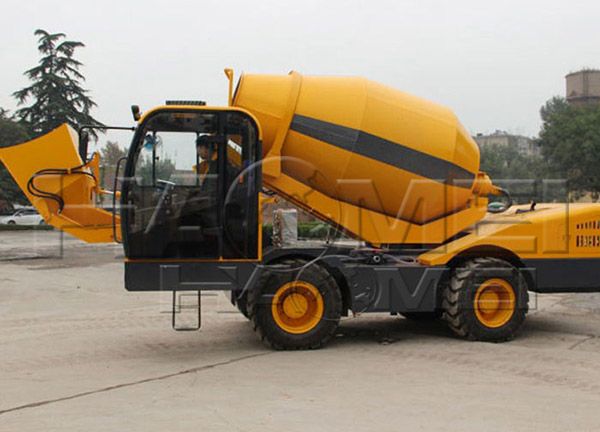How to Assemble Diesel Self Loading Concrete Mixer
 2025-08-28
2025-08-28The power source of a self loading concrete mixer truck is the core of its efficient operation. Currently, there are two main options: diesel and electric. The diesel self loading concrete mixer is equipped with high-horsepower diesel engines, offering powerful power and excellent range, making them particularly suitable for outdoor operations or construction sites with unstable power supplies.
These engines typically utilize high-pressure common rail technology, which not only reduces fuel consumption but also meets emissions regulations in multiple countries, such as the EU's Euro V and Euro VI standards, facilitating export.

Export Packing
When exporting self-loading concrete mixer trucks, the packing process must balance transportation efficiency and equipment protection:
First, select an appropriate container or flat rack container based on the equipment size. Small self loading mixer trucks (less than 6 meters in length) can fit into a 40-foot high cube container, while larger equipment requires a bare flat rack container. Before packing, remove vulnerable parts, such as rearview mirrors and bucket cylinders, and secure them with cushioning material.
Secondly, ensure proper corrosion protection. Spray anti-rust paint on exposed metal parts and lubricate key joints with grease. Place desiccant inside the vehicle to prevent moisture during sea transport. Tires should be deflated to 70% of standard pressure to minimize deformation caused by turbulence.
Finally, the securing method is crucial. Use wire ropes or chains to secure the equipment to the bottom of the container, ensuring no movement. A detailed packing list, including the equipment, removable components, tool kits, and spare parts, must be included with the container to facilitate customs clearance and inspection at the destination port.
Assemble steps of self loading concrete mixer truck
After receiving the equipment, the installation process is straightforward. Simply follow these steps:
Component Assembly: First, reinstall any removed mirrors, buckets, and other components. When connecting hydraulic lines, be sure to verify the connector types to avoid misconnections. After installation, check that all components rotate freely and are free of binding.
Fluid Filling: Add hydraulic oil, engine oil, and coolant according to the manual. Ensure that the oil type meets the equipment specifications. After the initial filling, start the machine and let it idle for 5 minutes to purge any air from the lines.
Electrical System Inspection: Connect the battery terminals and check that electrical components such as the instrument panel, lights, and operating handles are functioning properly. Pair and debug the remote control to ensure that remote operation is responsive and reliable.
Commissioning test: Under no-load conditions, test the loading, mixing, and unloading functions to see if they operate smoothly and whether the hydraulic system is leaking. A load test is then performed, loading a small amount of material to simulate operation. Once the self loading concrete mixer is stable, it can be officially put into operation.
Original Source: https://www.self-loading-mixer.com/a/how-to-assemble-diesel-self-loading-concrete-mixer.html
Tags: self loading concrete mixer truck
Prev: What Will 4x4 Drive of Self Mixing Concrete Truck Bring
Next: What Are The Main Spare Parts of Self Loading Concrete Mixer Truck
Send us a Message
Category
| HM1.2 Self Mixer |
| HM1.8 Self Mixer |
| HM2.0 Self Mixer |
| HM 2.6 Self Mixer |
| HM3.5 Self Mixer |
| HM4.0 Self Mixer |
| HM 5.5 Self Mixer |
| HM6.5 Self Mixer |
Relate Blogs
Relate Products
CONTACT US
| Haomei Self Loading Mixer Co.,Ltd |
| Tel/Whatsapp: +86-15978414719 |
| Email: feedom@haomei-machinery.com |
| Website: https://www.self-loading-mixer.com |
| Office Add: 1103, No.14 Outer Ring Road, CBD, Zhengzhou, China |





